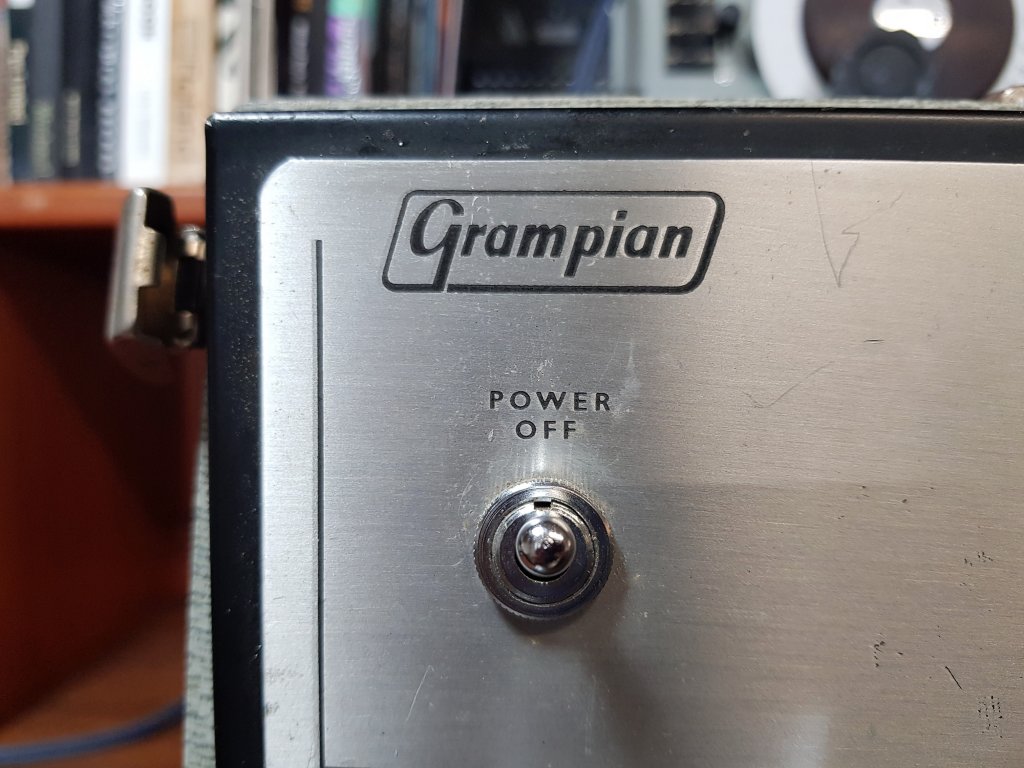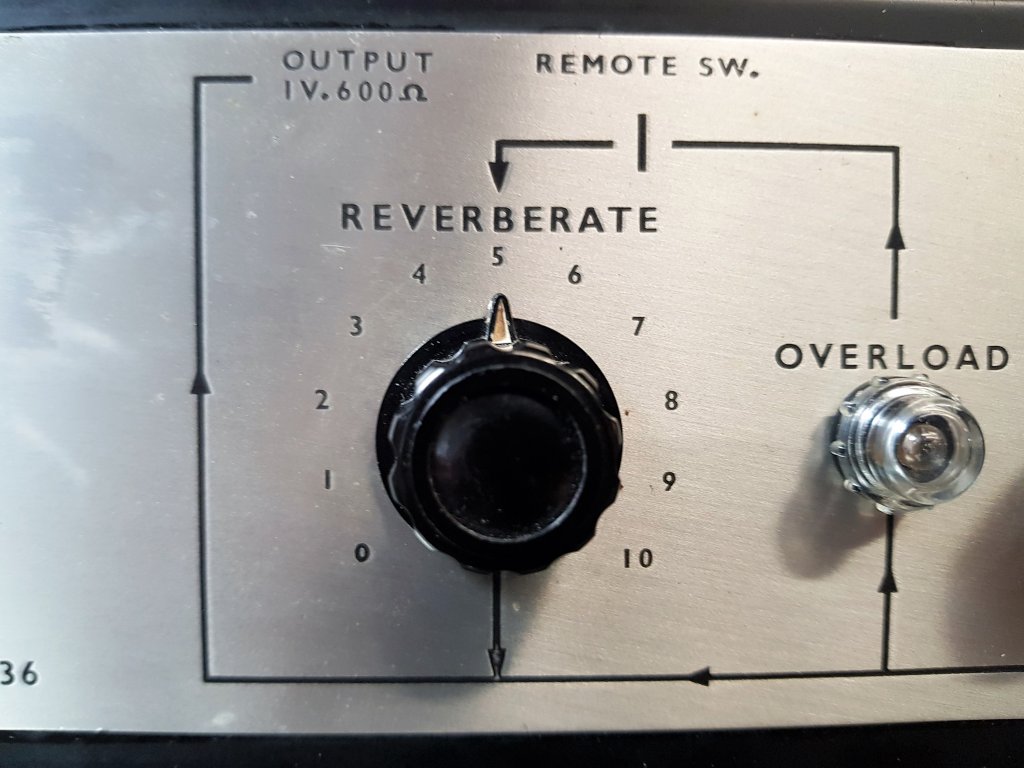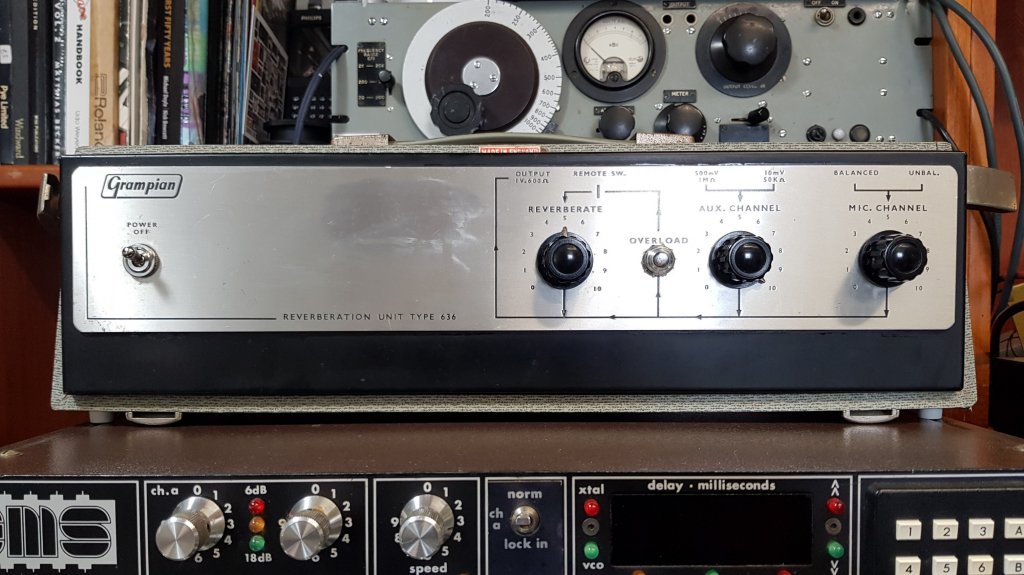
(Re)Building the Ark - Grampian Type 636 News...
UPDATE mid-Sept 2019 – we now have faceplates and cases for the first 10 sold units and are commencing the assembly. More news on that soon, but if you want to preorder one of the second batch of ten then you can find all the details here.
======
We have long been fans of the Grampian Type 636 Spring Reverb. That this humble grey box was used by two of the most influential musicians of the twentieth century (Lee Scratch Perry at Black Ark and Pete Townshend with The Who) was sufficient to secure its place in history.
For many years, it remained a curiosity: a footnote in the pages of musical history known by the cognoscenti who’d identified it in black and white photos and managed to track one down. It spent decades in the studio wilderness: outmoded and superannuated. As its germanium transistor circuits aged, becoming ever noisier and less reliable, the 636 – along with many other mechanical reverberant devices – was effortlessly overtaken by the new generation of clean digital algorithmic reverbs. With barely a backwards glance, studios jettisoned the old in favour of the new and when examples did occasionally come up for sale, it was usually for peanuts in the small ads of local papers rather than important lists of recording equipment.

I’ve written about my history with Grampians before, but the short version is that I’m no longer certain how I stumbled across my first 636; at the time they were a well-kept secret and seemed of little value from anything more than a collector’s point of view. As a lifelong fan of both the Who and dub reggae (unusual musical bedfellows), discovering it had been used by both Lee Perry and Pete Townshend piqued my interest and I duly paid the astronomical sum of £52 for one. It was noisy and somewhat broken; the old lantern batteries had been left in for a decade or so, leaking acid and causing carnage. I was no stranger to noisy old boxes – there was a wall of cranky old tape echoes in my studio – and in that first unit I heard, behind layers of hiss and crackle, evidence of that brilliant dirty sheen I now know so well.
Thanks to an old tech, who knew something of germanium transistor circuits, it was pressed into service, eventually being joined by a second unit, in better condition, for the princely sum of £120 (the word was clearly out and values were increasing).

As the fledgling gear-trading studio enterprise that would eventually morph into Soundgas took early unsteady flight, I’d continually search for and occasionally find Grampians, to be restored and resold – always keeping my own units which had become much-loved and permanent fixtures in the studio. Even back then they were few and far between; many have doubtless been thrown away as worthless old junk (one of the most recent units we sold was very nearly hurled into a skip during a house clearance) due to battery damage or decaying/noisy transistors. The unprepossessing looks haven’t helped – so unfashionable for much of the 80s/90s/00s – they hardly shout ‘save me, I’m valuable!’
Today is a very different story and I consider us fortunate to secure one in any condition, at almost any price. When we dare to post a picture of one on our social media feed, we are deluged with enquiries. We’ve put many Grampians in very capable hands, all of whom use, abuse and enthuse about them greatly on a regular basis: today the 636 deservedly sits at the high table of rare and exotic vintage recording gear.
Speaking of which… all the Grampian shots in this article are of a unit that just arrived with us and is, at the time of writing, available. Pictured below, it is not yet listed on the site so contact us now for information.

The dearth of, and high demand for, original Grampians led to a discussion with Doctor Huw as he was bringing a particularly-challenged unit back to life. Given how much rebuilding was sometimes necessary to restore a damaged original, might it be possible to build a new 636? For a long time, this remained a hypothetical discussion; certain elements were unknown and we hadn’t the time to reverse engineer and redesign, without any certainty of being able to build more than a handful of units due to paucity of original parts. At the beginning of this year, we gave Doctor Huw the green light to his valuable time to see how feasible it would be to build an entirely new 636, and to discover whether it could sound as good as an original.
Earlier this month, he handed me the first complete working prototype of what will become the Soundgas Type 636. Redesigned in separate modular circuit boards using a mix of new and vintage parts, it is a faithful recreation/re-imagining of the original Grampian Type 636 and bears the sonic hallmarks of my favourite original unit – but without the unnecessary noise.
The use of modular circuit boards allows us to test sections independently – here the mic preamp section is housed in a pedal enclosure for early testing.
We are very close to announcing preorders for the first run of 20 units which will begin to ship mid-summer. They will be hand-built at Soundgas using vintage spring tanks and will be in rackmount format. We will endeavour to fit Gibbs tanks as per the originals, but some units may use Accutronics or similar vintage models as supply is limited. While they will all possess the essential 636 sound, just like the originals each will be subtly different due to variations in components.
To be informed when the preorder goes live, please email tony@soundgas.com with your name and the subject line “Soundgas 636 preorder”. If you have already emailed, your name is already on the list and you will receive notification.
Soundgas are committed to training the next generation of vintage gear technicians and developing our website resources section to support and assist technicians worldwide. If you have any content or schematics that you’d like to share, please get in touch.







